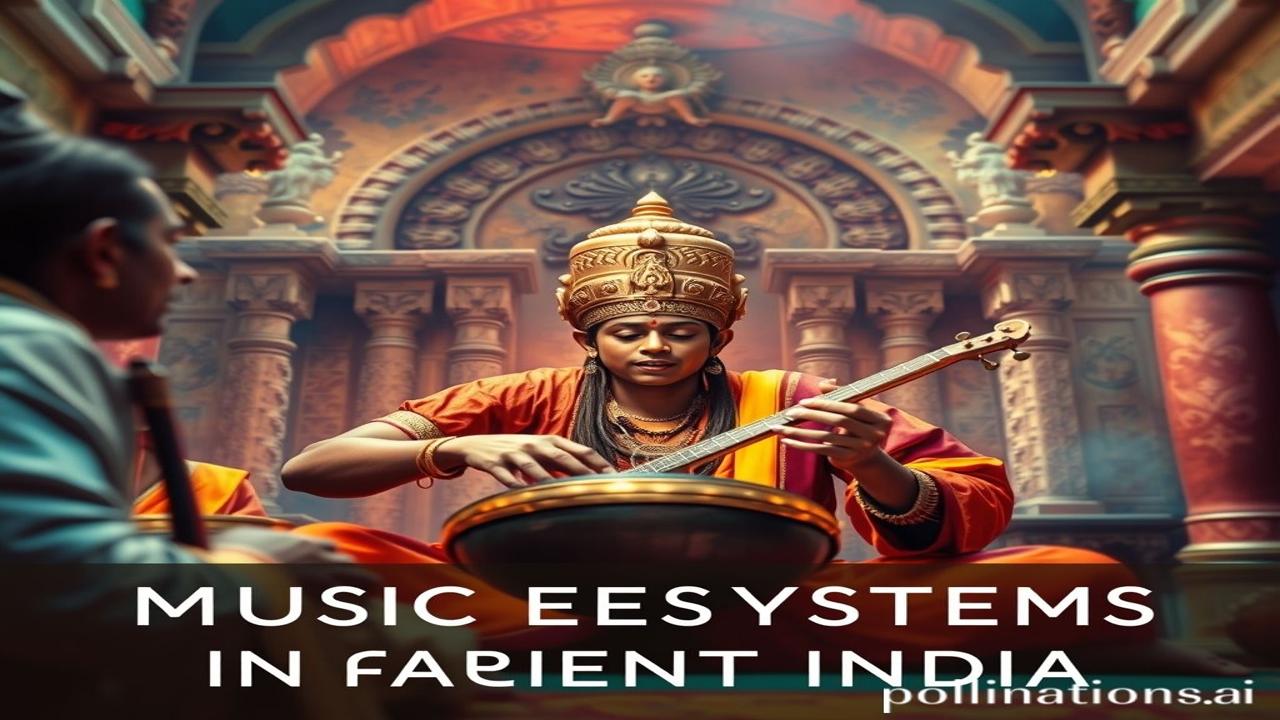Sangeet ka Safar: Unveiling the Melodic Echoes of Ancient India
Kabhi band aankhon se socha hai, ki Indus Valley Civilization ke gharon mein, subah ki aawaaz kaisi hoti thi? Kya mandir mein ghanton ki goonj, ya phir kisi nacheez shilpi ke hathiyaron ki dhun, jo har pathhar mein zindagi dal deti thi? Waqt ki dhool mein chhupi hai, Bharat ki dharti par sangeet ki ek aisi kahani, jo shayad hum sabhi ne adhuri suni hai. Let’s embark on a journey to rediscover the musical tapestry of ancient India.
Sangeet Shiksha: A Historical Tapestry
Kya thi yeh parampara? Ancient India mein music education, sirf entertainment ka zariya nahi tha. It was a deeply intertwined thread in the fabric of life, touching spiritual, cultural, and social aspects. Yeh ek holistic approach tha, jismein sirf gana ya bajana nahi, balki sangeet ke tattva ko samajhna, aur usse jeevan mein utarna bhi shamil tha.
Kab aur Kahan? From the Vedic period (around 1500 BCE) to the Gupta Empire (around 320-550 CE), sangeet shiksha ka ek structured system tha. Gurukuls, ashrams, aur mandir, music education ke pramukh kendra the. Vedic hymns ko samgaaan mein badalna, aur Natyashastra jaise grand texts ka creation, is baat ka saboot hai ki humare purvajon ne music ko kitni gehrai se samjha.
Kyun Zaruri? Music was considered a path to enlightenment, a means of connecting with the divine. Rajaon ke court mein musicians hote the, mandiron mein deviyon ke samne nritya hota tha, aur sangeet, har rishte aur tyohar mein ghula hua tha. Music education, therefore, was not just about acquiring a skill; it was about enriching life itself.
Jeevan ka Raag: People, Life, and Music
Imagine a young girl, Rukmini, in a Gurukul near Takshashila around 500 BCE. Subah-subah, woh apne Guru ke saath Vedic hymns ko sun rahi hai, ek tambura ki saathi mein. Guru, samgaaan ke nuances ko samjha rahe hain, aur Rukmini, dhire dhire, suron ke samundar mein doobti jaa rahi hai.
“Beta, sangeet toh khud ek shakti hai,” Guru kehte hain, “iske madhyam se tum apne aap ko aur sansaar ko samajh sakti ho.”
Meanwhile, in the Gupta court of Pataliputra, Kalidasa, the celebrated poet, is composing verses that are meant to be sung. Music and poetry are inseparable. Singers and dancers are trained rigorously. Every gesture, every note, tells a story.
Ek kisan, apne kheton mein kaam karte hue, ek dhun gunguna raha hai. Yeh dhun, generations se unke parivar mein chali aa rahi hai, ek yaadgaar jo unhe unke purvajon se jodti hai. Music is not confined to the elite; it is woven into the lives of everyone.
Aaj ki Dhara: Connecting to Our Roots
Aaj bhi, we see echoes of that ancient system in various forms. Classical music gharanas carry forward traditions that are centuries old. Temple music and dance forms like Bharatnatyam and Kuchipudi are living legacies of ancient music education systems. The concept of naad yoga, using sound for healing and meditation, still holds significance.
Bharatiyata, is about recognizing and celebrating this rich heritage. It’s about understanding that our identity is intertwined with the art, music, and knowledge systems that our ancestors developed. The sangeet parampara reminds us of the importance of holistic learning, where music isn’t just a skill, but a way of life.
Majedaar Facts & Myth-Busters
Myth: Ancient Indian music was only about devotional hymns.
Truth: While devotional music was crucial, ancient India also had thriving forms of secular music for entertainment, storytelling, and celebrations.
Fun Fact: The Natyashastra, attributed to Bharata Muni, is one of the oldest and most comprehensive treatises on performing arts, covering music, dance, and drama. It even details the emotions each rasa evokes!
Visual and Sensory Landscape
Imagine the aroma of sandalwood and incense wafting through a temple courtyard. The feeling of cool stone beneath your bare feet as you enter a Gurukul. The sounds of sitars, veenas, and mridangams echoing through the halls. Close your eyes and hear the rhythmic chanting of Vedic hymns… Can you feel the ancient world coming alive?
Antim Vichar
“Sangeetam Bina Jeevanam kim?
Vaaditam Bina Bhavam kim?”
(What is life without music?
What is existence without melody?)
Let’s strive to preserve, learn from, and build upon the musical legacy of ancient India. After all, the echoes of the past can resonate powerfully in the music of our future.
